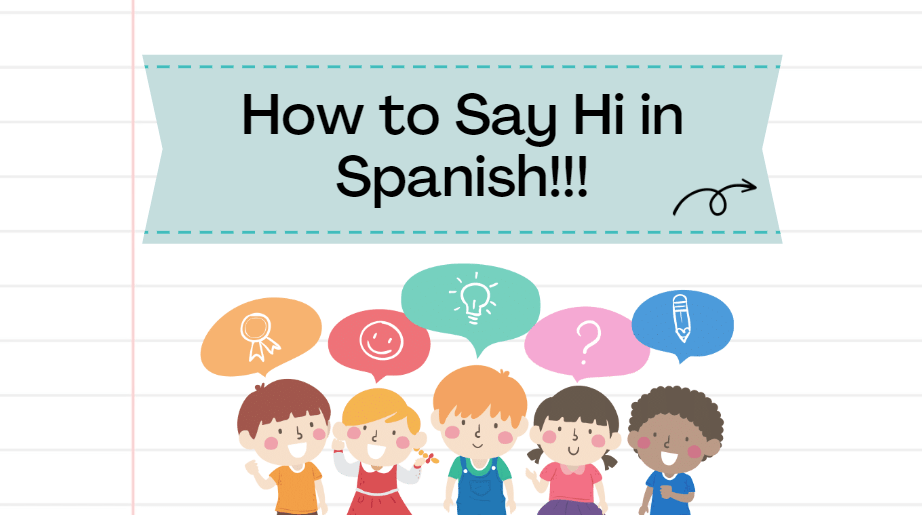When learning a new language, one of the first things we usually want to know is how to greet 🤝 someone. If you’re interested in Spanish, a language spoken by over 460 million people worldwide, then learning how to say “hi” is a great place to start. In this blog post, we’ll explore different ways to say “hi” in Spanish, helping you feel more confident when interacting with Spanish speakers.
The Basics: Saying “Hi” 🤝 in Spanish
The most common way to say “hi” in Spanish is “Hola.” This is a simple, versatile greeting that you can use in almost any situation. Whether you’re greeting a friend, meeting someone new, or just being polite, “Hola” is your go-to word.
Pronunciation Tip:
- “Hola” is pronounced as OH-lah.
- Remember, the “h” is silent, so don’t say “HO-lah”—it’s just “OH-lah.”
Other Ways to Say “Hi” 🤝 in Spanish
While “Hola” is the most common greeting, there are other ways to say “hi” in Spanish, depending on the context and your relationship with the person you’re greeting.

- “¿Qué tal?”
This phrase is similar to asking, “How’s it going?” in English. It’s a casual greeting often used among friends. It’s perfect for informal situations. - “¡Buenos días!”
This means “Good morning!” and is often used in the morning until around noon. It’s a polite way to greet someone early in the day. - “¡Buenas tardes!”
Use this phrase to say “Good afternoon!” from around noon until sunset. It’s a bit more formal than “Hola,” but still very common. - “¡Buenas noches!”
This is how you say “Good evening!” or “Good night!” It’s used in the evening or before going to bed. - “¡Hola, amigo!”
If you’re greeting a friend, you can add “amigo” (which means “friend”) to make it a bit more personal and friendly.
When and How to Use These Greetings
Formal vs. Informal Situations
In Spanish-speaking cultures, the formality of your greeting can be important. If you’re meeting someone for the first time, especially in a formal setting, using “Buenos días” or “Buenas tardes” might be more appropriate than just saying “Hola.”
Time of Day Matters
As mentioned above, the time of day influences which greeting you should use. “Buenos días,” “Buenas tardes,” and “Buenas noches” are all time-specific, while “Hola” works any time of the day.
Adding Politeness
You can make your greeting even more polite by adding “Señor” (Mr.), “Señora” (Mrs.), or “Señorita” (Miss) after your greeting. For example:
- “Buenos días, Señor.” (Good morning, Sir.)
- “Buenas tardes, Señora.” (Good afternoon, Ma’am.)
The Importance of Greetings in Spanish Culture
In many Spanish-speaking countries, greetings are an important part of social etiquette. Taking the time to greet someone properly shows respect and friendliness. Whether you’re traveling to a Spanish-speaking country, interacting with Spanish speakers at work, or just making new friends, knowing how to greet people in Spanish can help you make a positive impression.
Practice Makes Perfect
The best way to get comfortable with these greetings is to practice them. Try greeting your Spanish-speaking friends or colleagues using these phrases, or even practice them out loud at home. The more you use them, the more natural they’ll feel.
For learning 100 basic Spanish phrases, click HERE.
Conclusion
Learning how to say “hi” in Spanish is a simple yet powerful step toward mastering the language. Whether you stick with the classic “Hola” or try out some of the other greetings we’ve discussed, you’ll be on your way to more confident and effective communication. So next time you meet a Spanish speaker, don’t be shy—give them a cheerful “Hola” and see where the conversation takes you!
Learn “How to Address a Letter with Tips and Examples” Click HERE
For learning Spanish from Greetings to Emergencies beginner’s guide, click HERE.
For learning 100 basic Spanish phrases, click HERE.





Pingback: Greetings and Goodbyes in Spanish: 100 Basic Spanish Phrases - Digital Digest